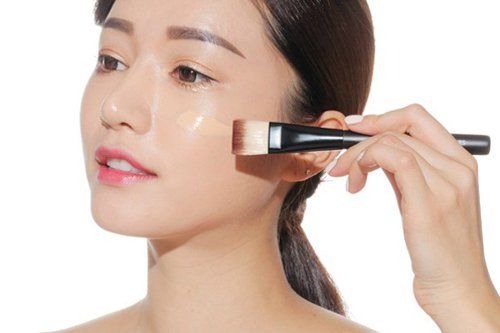This is an automatically translated article.
One of the most basic tips for sensitive skin-friendly clothing is to avoid synthetic fibers like nylon and polyester. They don't breathe as well as natural fibers, which can cause irritation and discomfort even for people who don't have sensitive skin.1. Natural fiber suitable for sensitive skin
If you have sensitive skin, or suffer from conditions like eczema or psoriasis, you understand the desire to find clothes that are comfortable enough to wear all day but still look fashionable. If you're not sure where to start, consider choosing natural fibers for a stylish look that won't worsen skin conditions.One of the most basic tips for sensitive skin-friendly clothing is to avoid synthetic fibers like nylon and polyester. They don't breathe as well as natural fibers, and can cause irritation and discomfort even for people who don't have sensitive skin.
Instead, choose fabrics made from cotton or silk. These fibers have a smooth feel and are naturally absorbent to help retain moisture in the skin. Cotton is commonly used in both woven and knitted fabrics, and you'll have a variety of options whether you're shopping for fabric to sew at home or looking for ready-to-wear items at the store.
Remember, natural fibers do not mean it will always be suitable for sensitive skin. Wool is a natural fiber but has an overly coarse and uncomfortable texture depending on its type and processing. Smooth, light wool like cashmere is usually a good choice, while felt, a popular choice for making hats, can be uncomfortable for sensitive skin. Similar problems exist with linen, which can be found in both fine and coarse linen.
Some owners of sensitive skin may also be allergic to certain natural fabrics, so if you suspect that may be the source of your discomfort it is best to speak with doctor to determine the exact types of allergens or fibers to avoid.
>>> Why is your skin sensitive to clothes?

Những loại sợi như cotton hoặc lụa có cảm giác mịn màng và hoạt động thấm hút tự nhiên giúp giữ ẩm cho da.
2. Some tips and techniques when choosing clothes for sensitive skin
If you're designing and sewing clothes for people with sensitive skin, there are a few tricks to ensure comfort from the first wear.Make sure to use only natural fibers and do not use any decorative stitching, or French seams to finish the rough edges of the seams on the inside of the garment so that they do not rub off and cause skin irritation.
You should avoid making clothing patterns that are tight, sticky, or torn and uncomfortable. In fact, most of these problems do not appear in good quality clothes but in convenient, cheap, ready-to-use clothes. Most clothes on the market limit everyone's body shape to "Small", "Medium" and "Large", so it can be difficult to provide a comfortable fit. for the wearer.
>>> How to choose sensitive skin care products

Bạn cần tránh làm ra các mẫu quần áo bó sát, gây dính, hoặc sờn rách và gây khó chịu
3. Color and size when choosing clothes for sensitive skin
While these factors usually don't pose much of a problem for handcrafted apparel brands, they're still things to keep in mind. For example, if a newly purchased cotton or silk jacket is uncomfortable, even though other cotton and silk clothing can be worn, it is most likely not a problem with the fibers. Often, dye and size are only an issue until the garment has been washed multiple times. If a new piece of clothing causes discomfort, try washing it first.Make sure to follow the care instructions of the label and avoid using any cleaners with dyes or fragrances, as they can also cause skin irritation. Rinse clothes one more time to make sure you have removed any remaining detergent residue and dry according to care instructions.
Avoid using any fabric softener or antistatic bedding in the dryer. Try using felted wool balls instead, which can help reduce static electricity without leaving residue on clothes. Annealing can give them extra crunch, but it can also be a problem for sensitive skin. Instead, iron according to the care instructions right before wearing for a snug look.
For items such as coats, suits and dresses that cannot be washed in the washing machine, dry cleaning can be problematic for sensitive skin. Some chemicals and processes used in dry cleaning can be irritating to people with allergies or skin conditions. Look for dry cleaners that use liquid carbon dioxide to clean clothes instead of other solvents. This leaves no waste residue and is better for the environment.
>>> Causes of sensitive skin and how to care

Những món đồ như áo khoác, bộ quần áo và váy không thể cho vào máy giặt, giặt hấp có thể là vấn đề đối với da nhạy cảm
4. Fashion factor when choosing clothes for sensitive skin
In addition to providing comfort, clothing for sensitive skin is also required for aesthetics and fashion. That means you probably want at least a few items with a little embellishment.However, for people with sensitive skin, these extras can be irritating even if they are outside of clothing and not in direct contact with the skin. For embellishments such as embroidery, sequins, rhinestones or studs, irritation is caused by threads or sharp edges, metal prongs appearing on the inside of the garment. This is especially true of any metal ornaments that contain nickel, a common allergen for many people.
For ready-to-wear, avoid this problem by using these types of decorations for outerwear. When sewing your own, use appliques sewn into clothes with cotton thread to add style without irritating the skin.
Apparel lines are using printed labels which are great for people with sensitive skin, but impractical to do the same with homemade clothes. Also, it's important to follow the care instructions for the fabrics and accessories you use.
Labels should be affixed to the garment in places such as the hem of the shirt, rather than at the back of the collar, as it is much less irritating and important care information can still be read easily. . It's also a must for branding if you're producing sensitive skin-friendly clothing for sale.
Having sensitive skin can be frustrating and even embarrassing, especially if you are self-conscious about your appearance. Worrying about whether a new item is offensive really takes away all the fun and enjoyment of shopping with friends. However, with these simple tips, you can find and create fashionable clothes that make you look great.
Please dial HOTLINE for more information or register for an appointment HERE. Download MyVinmec app to make appointments faster and to manage your bookings easily.













